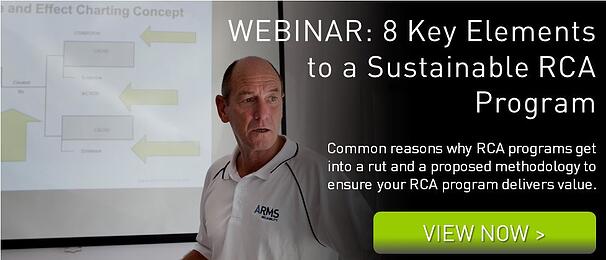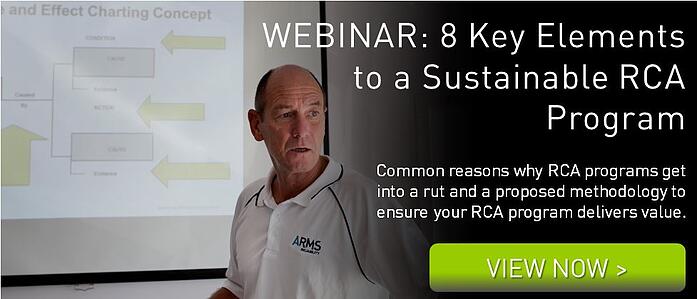Author: Jack Jager
An effective root cause analysis process can improve business outcomes significantly. Why is it then that few organisations have a functioning root cause analysis process in place?Here are the top 6 sure-fire ways to kill off a Root Cause Analysis program
1. Don’t use it.

The company commits to the training, creates an expectation of use and then doesn’t follow through with commitment, process and resources! Now come on, how easy is it to devalue the training and deliver a message that the training was just to tick someone’s KPI box and that the process doesn't really need to be used.
2. Don’t support it.
Success in Root Cause Analysis would be the ultimate goal of each and every defect elimination program. To achieve success however, requires a bit more than just training people in how to do it. It requires structures that initially support the training, that mentor and provide feedback on the journey towards application of excellence and thereafter have structures that delineate exactly when an investigation needs to take place and that delivers clear support in terms of time and people to achieve the desired outcome. Without support for the chosen process the expected outcomes are rarely delivered.
3. Don’t implement solutions.
To do all of the work involved in an investigation and then notice that there have been no corrective actions implemented, that the problem has recurred because nothing has changed, has got to be one of the easiest ways to kill off a Root Cause Analysis process. What happens when people get asked to get involved in RCAs or to facilitate them when the history indicates that nothing happens from the efforts expended in this pursuit? “I’m too busy to waste my time on that stuff!”
4. Take the easy option and implement soft solutions.
Why are the soft controls implemented instead of the hard controls? Because they are easy and they don’t cost much and we are seen to be doing something about the problem. We have ticked all the boxes. But will this prevent recurrence of the problem? There is certainly no guarantee of this if it is only the soft controls that we implement. We aren’t really serious about problem solving are we, if this is what we continue to do?
5. Continue to blame people.
The easy way out! Find a scapegoat for any problem that you don’t have time to investigate or that you simply can’t be bothered to investigate properly. But will knowing who did it, actually prevent rec urrence of the problem?
urrence of the problem?
Ask a different question! How do you control what people do? You control them or more correctly their actions by training them, by putting in the right procedures and protocols, by providing clear guidelines into what they can or can’t do, by creating standard work instructions for everyone to follow and by clearly establishing what the rules are in the work place that must be adhered to.
What sort of controls are these if we measure them against the hierarchy of controls? They are all administrative controls, deemed to be soft controls that will give you no certainty that the problem will not happen again. We know this! So why do we implement these so readily? Because it is the easy way out! It ticks all the boxes, except the one that says “will these corrective actions prevent recurrence of the problem?”
We all understand the hierarchy of controls but do we actually use it to the extent that we should?
6. We don’t know if we are succeeding because we don’t measure anything.
You get what you measure! When management don't implement or audit a process for completed RCAs it sends a strong message that there is no interest, or little, in the work that is being done to complete the analysis.
Tracking KPIs like, how many RCAs have been raised against the triggers set? How many actions have been raised in the month as a result and, of those actions raised, how many have been completed? If management is not interested in reviewing these things regularly along with the number of RCAs subsequently closed off in a relevant period, then it won't be long before people notice that no one is interested in the good work being done.
The additional work done to complete RCAs will not be seen as necessary, as it's not important enough to review and the work or the effort in doing this will then drop away until it's no longer done at all.

Another interesting point is that if only the number of investigations is reported, and there is no check on the quality of the analysis being completed, then anything can be whipped up as no one is looking! If a random audit is completed on just one of the analyses completed in a month then this implies that the quality of the analysis is important to the organisation.
What message do we send if we don’t measure anything?
In closing, the first step on the road to implementing an effective and sustainable Root Cause Analysis program is to pinpoint what's holding it back. These Top 6 sure-fire ways to kill off a Root Cause Analysis program will help you identify your obstacles, and allow you to develop a plan to overcome them.






 Every organisation has unresolved problems. Some are greater than others.
Every organisation has unresolved problems. Some are greater than others. 


